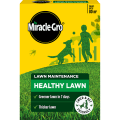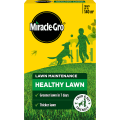Pots, tubs and containers of all sorts are the mainstays of every patio display. They come in many sizes and shapes, including troughs and window boxes which can be positioned on any wall or fence, and not just below your windows.
How to plant up pots, containers, tubs and window boxes
When to plant
Timing is everything! Summer containers should be planted from April onwards but need to be protected from frost until the end of May by using fibre fleece or fleece jacket. Winter containers should be planted in the months of September and October. Herbs are best sown/planted between April and July.
Drainage
Make sure the container has good drainage holes and add a layer of gravel or crocks (broken terracotta pots) to provide a better drainage layer if necessary. For large urns use polystyrene packing chips - they are lighter than crocks but just as effective (a lot of plants come in polystyrene containers so this is perfect re-use for them). Line terracotta pots with plastic bags or similar to reduce water loss through the walls of the porous pots. Use a quality potting compost freshly purchased from your gardening retailer.
Design layout
You should consider the size of plants you are growing and match them to the size of the tub, window box or container. The diagram on the right shows an optimal layout for a display in a large round container, note that taller plants are placed in the centre so not to dominate smaller plants. Follow this general rule for a great looking display. When growing annuals and other bedding plants, plant thickly from the start to produce an excellent display.
If the container is going to be viewed from all directions, taller plants and shrubs are better planted in the centre of containers with smaller plants surrounding them.
If the container is to be placed against a wall, taller plants and shrubs should be placed at the back of the container, with smaller plants at the front.
If using trailing plants, position these around the edges so that they can cascade down the container.
Lime-hating or acid-loving ericaceous plants, such as rhododendron, azalea, camellia and pieris, must be planted in a lime-free, ericaceous compost.
What can be planted in pots, tubs, containers and window boxes
|
Flowers |
Foliage |
Vegetables |
Fruit |
|
Fuchsia, Petunia, Verbena, Geranium, Impatiens, Lobelia, Tuberous Begonia, Bidens, Patio Roses, Lilies, Lavender, Salvia, Datura, Sweet Peas, Pansies |
Coleus, Cineraria, Sage, Japanese Maples (acer)*, Pieris*, Euonymus, Skimmia, Ornamental Grasses, Ferns, Hosta |
Tomatoes, Runner Beans (Hestia), Dwarf French Beans, Sweet Peppers, Chilli Peppers, Lettuce, Peas, Herbs, Onions, Shallots, Garlic |
Strawberries, Midget Apple and Pear Trees, Fig, Citrus |
*Plant in Ericaceous compost.
Potting up

- Once you’ve chosen your container, decide where you want it positioned or place on a pot mover or caddy. If large, it will be difficult to lift and move once filled and planted.
- About an hour before planting into your container, water the plants in their original pots or trays. This helps to reduce the ‘transplantation’ shock to the plant and eases the removal from their origin.
- Choose a good quality potting or container compost and fill to approximately 2cm or just under 1” from the top of the rim of your container. N.B- If using water-retaining gel or granules pre-mix the specified dose into the compost.
- Once you have decided where each plant is to be positioned, use your hands or a trowel to make a hole in the compost, the same size as the root ball of the plant. Remove the plant from its original pot carefully, insert it into the hole and firm into place.
- Once all plants have been put in position, gently firm compost down around them and water well.
- Finally, top dress the container with decorative gravel or slate. This will help retain moisture, prevent weed growth and help keep slugs and snails at bay!
How much compost will I need?
Internal diameter measurement of patio pots and average contents in litres.
|
22cm |
25cm |
28cm |
32cm |
37cm |
42cm |
|
5 litres |
7 litres |
10 litres |
15 litres |
23 litres |
33 litres |
Aftercare
- Replace topsoil with compost in early spring to provide renewed nutrients.
- Deadhead any dead or dying flowers - this will encourage new flowers to grow and keep your container looking fresh and healthy for longer.
- Water regularly and increase the frequency in hot and dry conditions. Water retaining gels and granules will aid water retention for your plants.
- Using a good quality plant food or fertilizer is advised to ensure the best chance for your plants- read manufacturer’s instructions for best results.
- Rotate the position of your content regularly to ensure equal sunlight coverage and even growth.
- Check regularly for pests or diseases and treat with an appropriate insecticide or fungicide.
Feeding
Some modern composts, such as Miracle-Gro Moisture Control Compost for Pots & Baskets, contain slow-release plant foods that will feed your plants for up to six months. But most other composts will run out of steam and feeding will be necessary after five to six weeks, if your plants are to flourish throughout the summer and autumn. To feed just once a season push the plant food cones into the compost to feed your plants for the next six months.
If you prefer to feed your plants regularly and want fantastic results, then use soluble plant food such as Miracle-Gro Soluble Plant Food or Miracle-Gro Liquid Concentrate. Note that acid-loving plants should be fed with special ericaceous plant food.
Watering
Don’t forget that plants growing in containers will be more-or-less totally reliant on you to supply the right amount of water at the right time.








